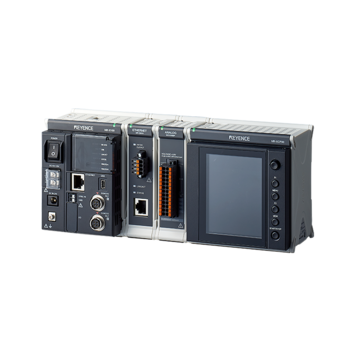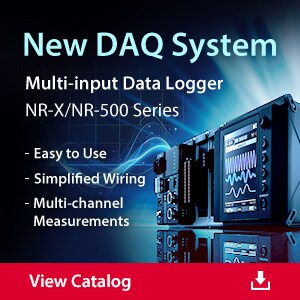Data Acquisition (DAQ)
Sound Quality Measurement
-
Tags:
- Sound Intensity , Sound Level
Sound quality measurement is an important process to evaluate how the human ear perceives sounds produced by machines and systems.
Whether for objective or subjective sound testing, sound testing helps determine the loudness, tune, sharpness, noise rating, and many other qualities of a sound profile. Data and insights from the sound quality test can be used to design products and machinery that meet regulatory quality standards and consumer comfort requirements.
Learn how sound quality is determined and KEYENCE data acquisition systems for precise and reliable audio analysis.
Sound Quality Metrics
Sound quality metrics refer to objective measurements used in quantifying the quality of sound produced by a device or system. These metrics collectively serve as an indispensable sound and vibration engineering tool. Here are some of the objective measurements (or sound metrics):
- Loudness
- Balance
- Pitch
- Sharpness
- Articulation Index
- Speech Intelligibility
- Noise Criterion (NC)
- Noise Ratings (NR)
We’re here to provide you with more details.
Reach out today!

Applications of Sound Quality Analysis
Sound quality testing is used to evaluate and improve the audio signal quality of different devices, machinery, and systems. Below are some applications and benefits of sound quality measurement.
- Automotive Industry: Sound testing for Noise, Vibration, and Harshness (NVH) in vehicles helps eliminate unwanted sound irritation and improve passenger comfort. It also helps automotive brands distinguish themselves from the competition with distinctive engine and exhaust sound signatures.
- Consumer Electronics: Analysis of sound quality metrics helps to reduce noise levels of everyday appliances like refrigerators and washing machines.
- Industrial Machinery: Pumps, generators, conveyor systems, and other machinery benefit from sound quality testing. Sound levels can also signify the early stages of equipment failure.
Types of Sound Quality Testing
There are two primary types of sound quality testing: objective and subjective testing.
- Objective testing uses tools and measurement devices, such as a data acquisition system, to analyze sound quality, while subjective testing relies on human perception to access audio samples.
- While subjective quality tests are primarily done by focus groups or a listening jury, analytical (psychoacoustics) tools providing results reflecting human subjective impressions can also be deployed.
- Objective measurement focuses on metrics such as harmonic distortion, dynamic range, frequency response, and signal-noise ratio, to mention a few. On the other hand, voting, rating, descriptive analysis, and paired comparison are common criteria for audio quality assessment in subjective audio analysis.
Key Features of Sound Quality Solutions
There is a wide variety of sound-quality solutions. Some are equipment, while others are software. Choosing a comprehensive sound quality measurement solution will go a long way toward achieving precise and reliable audio analysis.
When out there in the market looking for a sound quality test system, check for a solution that offers precise data acquisition. Ask questions like, can this device or equipment capture audio signals across a wide frequency range? Clear visualization of captured data is another key feature to consider before committing to a system.
Get Started with KEYENCE Sound Quality Measurement DAQ Solutions
As a leader in the DAQ industry, KEYENCE offers multi-input DAQ with support for a broad spectrum of frequencies. Accompanying software provides visualization functions and many more. Compact design, reduced wiring build, and multi-channel measurement capability are other reasons this DAQ device is the top choice.
For more information about product capabilities on our multi-input data logger, contact us today.
Contact us to learn more about how our advanced technology can help take your business to the next level.
Contact Us



